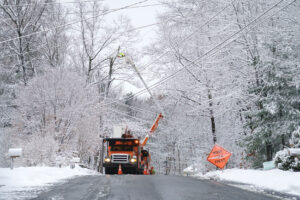Hoosier Energy’s sprawling service territory includes the migratory path and habitat of the monarch butterfly, but the Indiana-based generation and transmission (G&T) cooperative is not worried about the likelihood of federal protection for the popular pollinator.
That’s because Hoosier Energy, which serves Wayne-White Counties Electric Cooperative in Fairfield, recently became the first G&T co-op to receive a “certificate of inclusion” (COI) from the U.S. Fish and Wildlife Service (USFWS) to join the Candidate Conservation Agreement with Assurances (CCAA) for the monarch butterfly.
The voluntary agreement ensures enrollees will face no conservation requirements beyond those provided for in the CCAA, should the monarch one day be listed under the Endangered Species Act.
“With the certificate of inclusion, we will know what to expect,” said Dave Appel, Hoosier Energy’s environmental team lead. “Even if the monarch is listed, we will not be subject to any greater regulation than what the COI requires.”
USFWS is expected to decide whether to list the monarch as threatened or endangered in the coming years, possibly as early as fiscal year 2024. If listed, opportunities to enroll in the CCAA would remain available to those with operations in monarch habitat until an effective listing date.
The monarch butterfly has long been a species of concern due to its dwindling population. Along the monarch’s migratory corridor, which stretches from Texas through the Midwest to Canada, many electric co-ops have put conservation plans in place.
The nearly two-year certification process involved investment in significant conservation activities and a lot of support from the board and management, but Hoosier officials say they see a lot of upsides to the effort.
Enrollment in the CCAA “validates what we have done and gives us confidence moving forward,” said Appel.
The CCAA recognized the integrated vegetation management methods of the co-op, which involves targeted applications of herbicides to only the woody-stemmed plants that pose the risk of interrupting electric service in rights of way. This allows for minimal disturbance to monarch habitat when compared to widespread mowing and indiscriminate chemical spraying of foliage.
Jared Murphy, vegetation management coordinator at Hoosier Energy, said, “Most of the conservation measures in our agreement are things that we were already doing, so it wasn’t a big shift for us to meet the requirements of the CCAA.”








